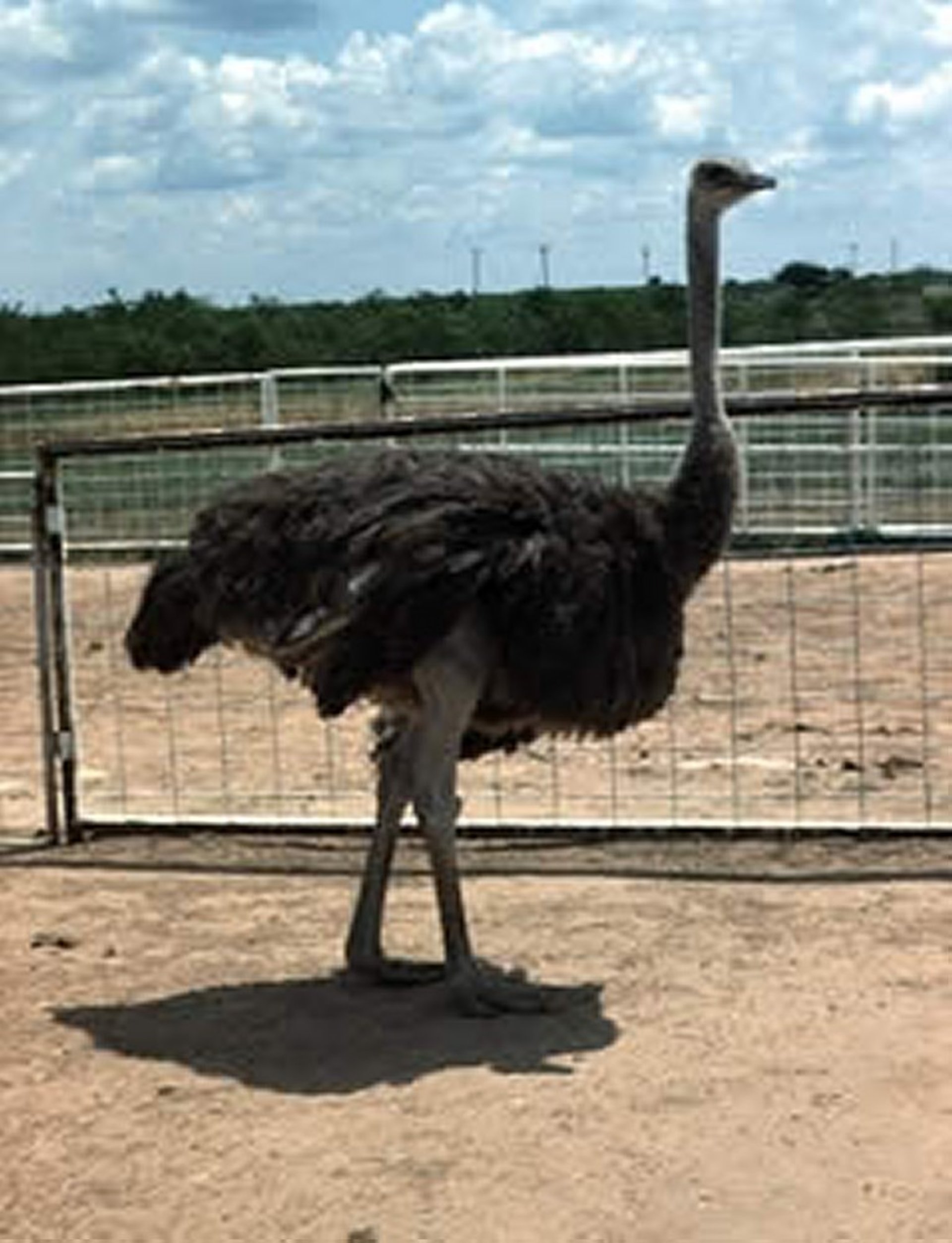Courtesy of Dr. Karen Hicks-Alldredge.
Courtesy of Dr. Karen Hicks-Alldredge.
Twelve species of birds are grouped as ratites, not including the order Tinamiformes. These species include the ostrich, emu, rhea, cassowary, and kiwi. The ostrich, emu, and rhea are the ratite species primarily raised in production facilities, whereas all ratite species may be found in zoo collections.
The ostrich originated in Africa and has been commercially raised since 1850 for feathers, meat, and hide products. The emu is native to Australia and has been raised for meat, oil, and leather in many countries around the world, including the US. The South American rhea has been produced primarily for feathers.
Ostriches (Struthio camelus) are the largest members of the ratite group. Mature ostriches may stand 2.4–2.8 m tall and weigh up to 160 kg, although most are 65–130 kg. Males are black and white; females are brown.
Emus (Dromaius novaehollandiae) are second only to ostriches in size, measuring up to 2 m tall and weighing 18–48 kg. Female emus are typically larger than males. Both females and males have brown to gray-brown plumage with black feather shafts and tips. Emus are flightless, although they travel at a quick trot and can sprint at speeds up to 51 km/hour.
Rheas can reach 1.7 m in height and 40 kg in weight. They are native to South America and are divided into two species: the Greater Rheas (Rhea americana) include five subspecies, and the Lesser Rheas (Rhea pennata) include three subspecies. Similar to emus, rheas have brown to gray-brown feathers.




